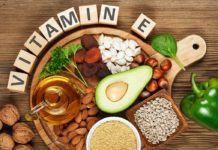Varicose veins refer to enlarged, swollen, and blue or dark purple veins. It occurs in the legs when the blood flows in the wrong direction, and the vales are weak. When valves don’t work adequately, blood collects in your legs, adding pressure, resulting in large, twisted, and weak veins. You can be at increased risk if you have a family history of it, stand for long periods, or have an inactive lifestyle.
If you’re embarrassed to wear shorts in public because your veins are popping out unusually, you’re not alone. More than 40 million people in the U.S. have been diagnosed with varicose veins. Luckily, there are ways to treat varicose veins that can leave you feeling confident again.
1. Get VenaSeal Treatment
VenaSeal is a Health Canada-approved procedure used to treat varicose veins by eliminating them. The VenaSeal vein treatment from NewDermaMed uses medical glue to physically shut down and deal with defective veins inside the body. It does not use extensive anesthesia or regional nerve blocks that other surgical vein removal procedures do.
Some of the benefits of VenaSeal include:
- Speedy recovery
- Ability to return to regular activities quickly
- Minimal-to-no bruising
- Topical anesthesia
- No skin burns
- No risk of nerve damage
- No need for compression stockings (usually)
The medical expert will take an ultrasound imaging exam and assess the vein before the procedure. Then, you will receive a topical anesthetic in the diseased vein before the catheter is inserted into the vein. After the treatment, the surgeon will inform you about post-treatment care.

2. Increase Physical Activity
Exercising regularly can improve blood circulation in the legs that push the blood collected in the veins. Frequent movement can also reduce a person’s weight, which could be a contributing factor to varicose veins. It is beneficial to exercise more if varicose runs in the family to reduce the chances of it happening to you.
Some low-impact exercises that enable calf muscles to work are:
- Walking
- Cycling
- Swimming
- Seated calf raises
- Yoga
3. Change Your Food Intake
Consuming highly processed foods or items with low fibre can cause vein-inhibiting constipation, resulting in varicose veins. It is vital to eat foods that do not interfere with blood flow because vein health requires regular circulation. It would help if you also watched your salt intake because sodium-rich foods can cause the body to retain water and increase the volume of fluids, straining the veins.
Here are some foods that could contribute to better vein health:
- Copper – beef liver, almonds, and asparagus to increase vein elasticity
- Fruits – strawberries, blueberries, oranges for their antioxidants and anti-inflammatory contents
- Vegetables – onions, spinach, broccoli for flavonoids to improve blood circulation
- Water – to prevent constipation and prevent disruptions in circulation

4. Wear Loose-fitting Clothing
What you wear can also impact your veins. For example, tight-fitting clothes can restrict blood flow and hamper blood circulation. Although wearing tight clothes or high heels will not automatically result in varicose veins, it can be beneficial to switch your fashion choices if you already suffer from them.
The types of clothes that can be more comfortable are:
- Baggy pants
- Dresses or skirts
- Stockings or leggings
- Flat shoes
There are numerous things you can do to control varicose veins and gain back your confidence. But, before you proceed with anything, talk to a professional and kickstart your varicose-free journe

















